ALCEA
Alcea L., Sp. Pl. 2: 687. 1753; Gen. Pl. 5: 307. 1754; Boiss., Fl. Or. 1: 826. 1867; Zohari, Bull. Res. Counc. Israel, 1104: 210. 1963; Fl. China @ eFloras.org 12: 267; Fl. North Amer. @ eFloras.org vol. 6; Fl. Pak. @ eFloras.org p. 49.
Herbs, annual, biennial or perennial, usually erect, unbranched, most parts stellate pubescent, sometimes mixed with long simple hairs. Leaves long petiolate; leaf blade ovate to suborbicular, angled, weakly lobed or deeply palmatipartite, margin crenate or dentate, apex acute to obtuse. Flowers axillary, solitary or fascicled, often arranged into terminal racemes, actinomorphic, bisexual, 5-merous, hypogynous. Epicalyx lobes 6-9, basally connate. Calyx 5-lobed, +/- pubescent. Corolla rotate, usually more than 3 cm long, lobes 5, pink, white, purple or yellow, apex notched. Stamens many, monoadelphous; staminal column exserted, 5-angled, glabrous with anthers clustered at apex; anthers yellow and compact. Ovary 15- or more-locular; one ovule per loculus, erect; styles as many as loculi; stigmas decurrent, filiform. Fruit a schizocarp, disc-shaped, fruit axis as long as or shorter than carpels; mericarps 18-40, laterally compressed and circular with a prominent ventral notch, glabrous or pubescent, incompletely 2-celled, proximal cell 1-seeded, distal cell sterile. Seeds glabrous or pustulose, reniform.
82 species
Alcea rosea
Alcea rosea L. Sp. Pl. 2: 687. 1753; Gen. Pl. 5: 307. 1754; 1867; Boiss., Fl. Or. 1: 826. 1867; Zohary in Bull.-Res. Counc. Israel, 11D4: 210. 1963; Fl. China @ eFloras.org 12: 268; Fl. North Amer. @ eFloras.org vol. 6; Fl. Pak. @ eFloras.org p. 49; Althea rosea (L.) Cav., Diss. 2: 91. 1786; A. rosea var. sinensis (Cav.) Hu, Fl. China Fam. 153: 10. 1955; Malva rosea Garsault, Fig. Pl. Med. t. 359. 1764.
Herbs, biennial, erect, 2(-3) m tall. Stem densely hirsute. Stipules ca.1.3 mm x 8 mm, ovate, 3-4(5)- lobed, hirsute. Petioles 5-22 cm long, stellate hirsute; leaf blade nearly orbicular, entire to palmately 5-7-lobed or crenate-angled (upper leaves 3-lobed), up to 22 cm x 19 cm, papery, abaxially long stellate hirsute, adaxially sparsely pilose, lobes triangular or rounded, central lobe ca. 3 cm x 4-8 cm. Flowers solitary or 2-3 in fascicles aggregated into a terminal, raceme or spike-like inflorescence, actinomorphic, bisexual, 5-merous, hypogynous. Bracts foliaceous or absent. Pedicels ca. 5 mm, 8-10(-15) mm long in fruit, stellate hirsute. Epicalyx cup-shaped, usually 6-11-lobed, 8-10 mm long, densely stellate hirsute, lobes ovate-lanceolate or triangular. Calyx campanulate, 2-3 cm in diameter, lobes ovate-triangular, 1.2-1.5 cm x ca. 1 cm, densely stellate hirsute, persistent. Corolla red purple, white, pink, yellow or black purple, rotate, 6-11 cm in diameter, sometimes double, petals obovate-triangular, ca. 4-6 cm x ca. 7 cm, base attenuate, claw tipped with long thin hairs, apex emarginate. Stamens many, monoadelphous; staminal column exserted, glabrous, ca, 2 cm long, filaments ca. 2 mm long clustered at apex. Ovary 20-or more loculed, one ovule per loculus; styles as many as loculi; stigmas decurrent, filiform. Schizocarp disk-shaped, +/- 2 cm in diameter, puberulent, mericarps many (20-40), nearly orbicular, longitudinally grooved, 5-7 mm across, back 1.5 mm broad, 2-celled by false septum, proximal / lower cell 1-seeded, distal/ upper cell sterile. Seeds reniform.
Common Names: Holly-Hock; Gul-khaira, Gul-phaira (Hindi)

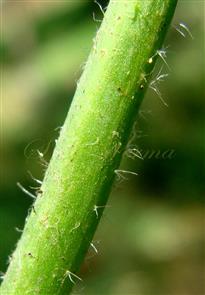
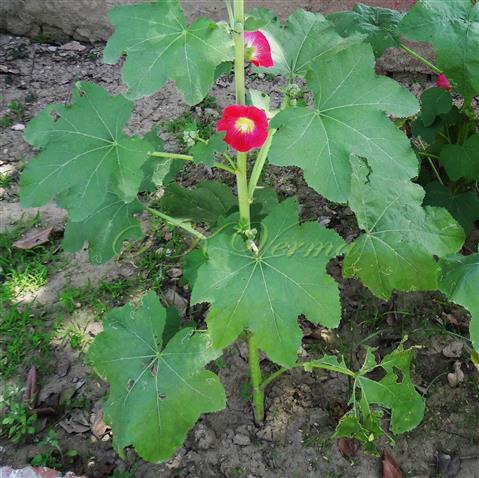
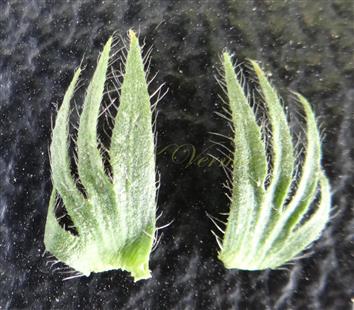
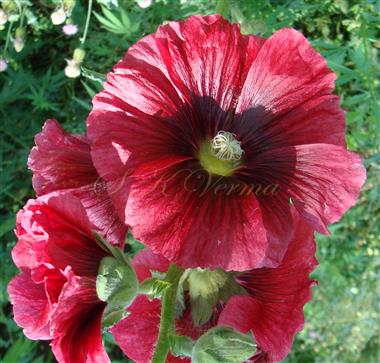
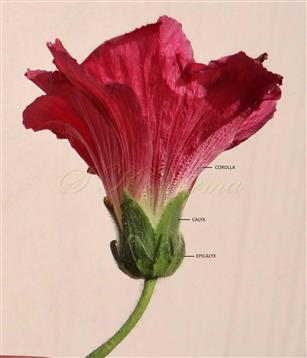
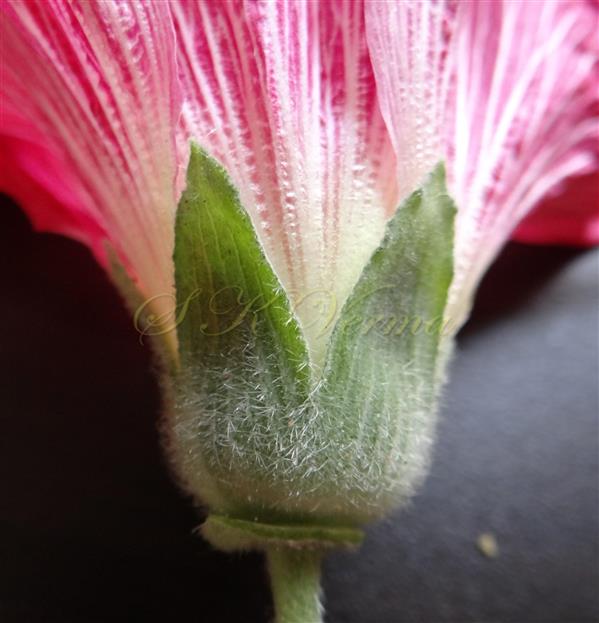
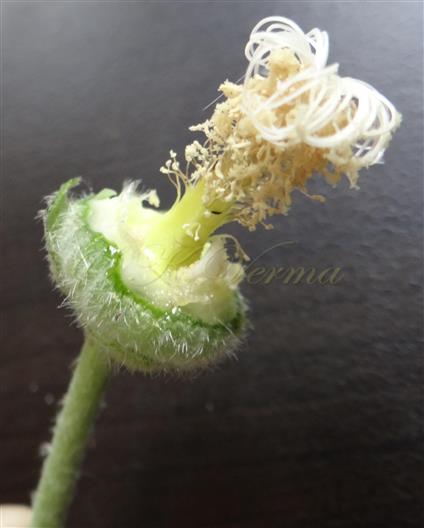
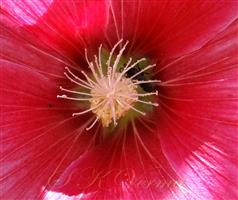
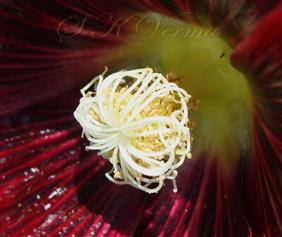
-DSC06735-35 loculi.jpg)











-DSC06735-35 loculi.jpg)